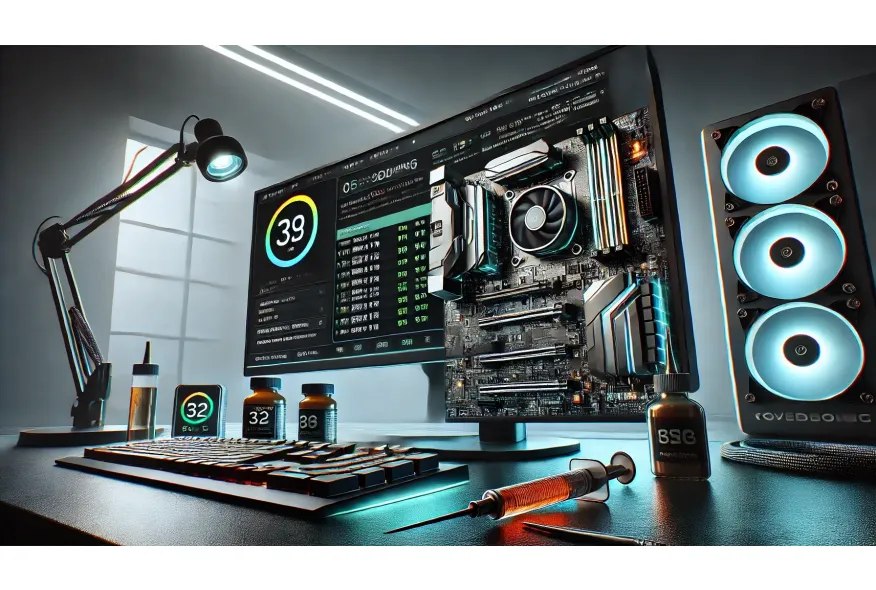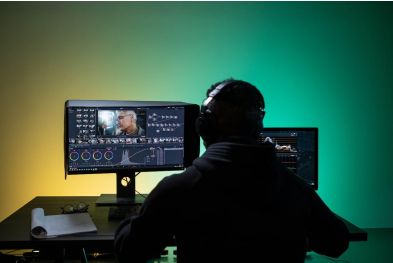What is Overclocking and How to Do It Safely
Unlocking Performance: A Complete Guide to Overclocking Your PC
If you’ve ever wanted to squeeze extra performance out of your CPU, GPU, or even your RAM, you’ve likely come across the term overclocking. This practice allows enthusiasts to push their hardware beyond the manufacturer’s official specifications, unlocking faster speeds and better performance. However, overclocking isn’t without risks — overheating, instability, and even hardware damage are possible if done carelessly.
In this guide, you’ll learn exactly what overclocking is, how it works, and — most importantly — how to do it safely to maximize performance without harming your PC.
What is Overclocking?
Overclocking is the process of manually increasing the clock speed of a component beyond the manufacturer’s standard specification. This is most commonly done with CPUs and GPUs, but RAM overclocking is also popular among enthusiasts.
Why Do People Overclock?
- Boost Performance: Faster speeds mean faster processing, which benefits gaming, rendering, and multitasking.
- Extend Hardware Lifespan: Instead of buying new hardware, some users overclock older components to keep up with modern demands.
- Hobby and Experimentation: Overclocking is a popular practice in enthusiast communities, where users enjoy fine-tuning and benchmarking their systems.
Components That Can Be Overclocked
1. CPU (Processor)
CPUs from brands like Intel and AMD often allow overclocking on specific models. For example:
- Intel K-series processors are unlocked for overclocking.
- AMD Ryzen processors generally support overclocking across the board.
2. GPU (Graphics Card)
Most modern GPUs, including those from NVIDIA and AMD, can be overclocked using software tools like:
- MSI Afterburner
- EVGA Precision X1
- AMD Radeon Software
3. RAM (Memory)
Memory overclocking can also yield performance gains, especially for gaming PCs and content creation systems. This is usually done through XMP profiles or manual tuning in the BIOS.
Risks of Overclocking
Before you jump into overclocking, it’s important to understand the potential risks:
- Overheating: Increased clock speeds generate more heat.
- Stability Issues: System crashes, freezes, or corrupted files.
- Reduced Lifespan: Excessive voltage can wear out components faster.
- Voided Warranty: Some manufacturers void warranties if overclocking causes damage.
Tools You Need for Safe Overclocking
Software Tools
- CPU-Z: Monitor CPU details.
- HWMonitor: Check temperatures and voltages.
- Prime95 or Cinebench: Stress testing for stability.
- MSI Afterburner: Popular GPU overclocking tool.
- MemTest86: Test RAM stability after overclocking.
Hardware Considerations
- Quality Cooling: Overclocking generates extra heat, so a good air cooler or liquid cooling system is essential.
- Power Supply (PSU): Ensure your PSU can handle the increased power draw.
- Quality Motherboard: High-end motherboards often feature better VRMs (voltage regulators), making overclocking safer.
How to Overclock Your CPU Safely
Step 1: Check If Your CPU Supports Overclocking
- For Intel, only K-series and X-series CPUs are overclockable.
- For AMD, most Ryzen CPUs support overclocking.
Step 2: Enter the BIOS
- Restart your computer and press the BIOS key (usually Delete or F2).
- Locate the Overclocking or CPU settings section.
Step 3: Increase Multiplier Gradually
- CPUs run at a base clock speed (usually 100 MHz) multiplied by a multiplier.
- Increase the multiplier 1 step at a time and test for stability.
Step 4: Stress Test and Monitor Temperatures
- Run a stress test tool like Prime95 for at least 30 minutes.
- Watch temperatures using HWMonitor — avoid exceeding 85°C.
Step 5: Adjust Voltage (If Necessary)
- To achieve higher clocks, you may need to slightly increase CPU voltage.
- Be very careful — too much voltage will quickly degrade your CPU.
How to Overclock Your GPU Safely
Step 1: Use Overclocking Software
- Download and install MSI Afterburner (or a similar tool).
Step 2: Increase Core Clock Gradually
- Start with a small bump of 25-50 MHz.
- Test stability with a benchmarking tool like 3DMark.
Step 3: Monitor Temperatures
- Keep your GPU under 85°C during extended loads.
Step 4: Adjust Power Limit (Optional)
- Most tools allow you to increase the Power Limit slightly to give the GPU more headroom.
Step 5: Memory Overclock
- You can also increase VRAM speed for additional performance — again, do this gradually.
How to Overclock RAM Safely
Step 1: Enable XMP Profile
- Most modern RAM kits support XMP (Extreme Memory Profile), which automatically applies a safe overclock.
Step 2: Manual Tuning (Advanced Users)
- Manually increase the RAM frequency.
- Adjust timings and voltages carefully.
Step 3: Stability Testing
- Use MemTest86 to ensure stability.
Safety Tips for Overclocking
✔️ Increase speeds gradually — don’t rush.
✔️ Always monitor temperatures and voltages.
✔️ Use stress testing tools to check for stability after each change.
✔️ Ensure proper cooling (good case airflow, quality CPU cooler).
✔️ Don’t exceed recommended voltages from manufacturer guidelines.
✔️ Be prepared to reset BIOS if the system won’t boot — many motherboards offer a Clear CMOS button.

Is Overclocking Worth It?
| Factor | Is It Worth It? |
|---|---|
| Gaming (1080p) | Minor gains |
| Gaming (4K) | Negligible gains (GPU-limited) |
| Content Creation | Often worth it |
| Competitive eSports Gaming | Can provide an edge |
| General Use (Browsing, Office Work) | No benefit |
In short, overclocking can be beneficial if you enjoy tweaking your system or need extra performance for demanding tasks. However, if you prioritize stability and longevity, it’s often better to run your hardware at stock speeds.
Final Thoughts: The Art of Safe Overclocking
Overclocking can unlock impressive performance, but it requires patience, knowledge, and caution. By following safe practices, monitoring your temperatures, and not exceeding recommended voltages, you can safely enjoy the benefits of overclocking without risking your hardware.
Whether you want to boost frame rates in games, accelerate rendering times, or simply explore what your hardware is capable of, overclocking is a powerful tool — if used wisely.







